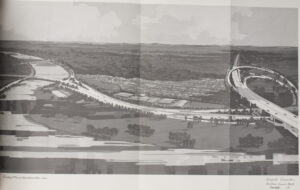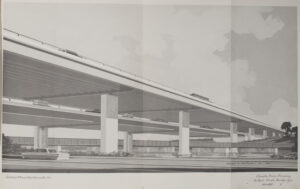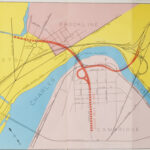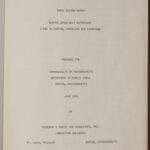Published: St. Louis and Boston, 1965
By the time this report was prepared for the Massachusetts Department of Public Works in 1965, the idea of building an expressway from Roxbury to Somerville had been around for more than a decade and a half. The initial plan for I-695 was proposed in 1948. The route would have begun in Boston’s Roxbury neighborhood, cut through Brookline, bisected Cambridge right in MIT’s backyard, and reconnected with I-93 in Somerville. Needless to say, this 7.3-mile loop would have effected a drastic change on the urban landscape.
As crews began clearing the right-of-way in the early 1960s, opposition groups coalesced. Nearly two decades after the plan’s conception, Tip O’Neill, then occupying John F. Kennedy’s former congressional seat, expressed what many others must have felt at the time:
It’s been nineteen years since a basic study has been made on the need for this road. The Inner Belt would be a China Wall dislocating 7,000 people just to save someone in New Hampshire twenty minutes on his way to the South Shore.
Among the opposition leaders was Fred Salvucci, transportation consultant to Boston Mayor Kevin White and an MIT alumnus. His movement gained steam and steadily worked its way through state and federal ranks. In 1972, the project was finally canceled  (though the “Big Dig” – itself controversial for different reasons – would address some of the unresolved traffic issues).
(though the “Big Dig” – itself controversial for different reasons – would address some of the unresolved traffic issues).
Vestiges of the abandoned project can still be seen today. Melnea Cass Boulevard in Boston, for example, utilizes the corridor originally cleared for the Inner Belt right-of-way.


